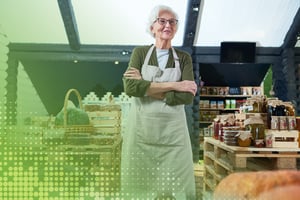The holiday season is a crucial time for retailers of all kinds. Whether you run a grocery store, a convenience store (c-store), or a specialty retail shop, planning your inventory for holidays like Christmas and Thanksgiving is essential to meet customer demand, maximize profits, and ensure a smooth shopping experience. We know it is only September, but the holidays sneak up on you! Let's discuss the optimal timing for ordering holiday inventory to help you make the most of this festive season.
How to Use Impulse Shopping in C-Stores to Increase Profits
In a scientific telephone survey of 1,000 adult Americans, 75 percent said they have made an impulse purchase. By definition, impulse buying is the act of purchasing something unplanned after feeling the sudden urge to buy a product. This often happens when a customer has come into your c-store to buy a specific item but leave with multiple. It is important to learn who is making the purchases, what causes customers to impulse buy, and what items are most tempting.
Understanding the Impulse Buyer
Many customers impulse buy and are tempted by sales and promotions. If a shopper believes that they are getting a good deal then they are much more likely to buy that product. They may also purchase an item when it is located at the checkout counter. The items customers see at the counter right before they make their originally intended purchase are very likely to be picked up. Customers that feel specific emotions such as excited, bored, or sad, are also easily tempted to make additional last minute buys. Other customers are habitual shoppers and love to pick up additional items just for fun. These shoppers tend to have a large disposable income and are frequent impulse buyers.
59 percent of Americans say cost and time are equally important when it comes to purchasing decisions. This means that customers are more likely to buy more items that are convenient and easy to purchase. You can also help to boost your impulse buys by having an area for customers to sit, drink coffee, use Wi-Fi, ect. The longer customers are in your c-store the more opportunities you have to tempt them into a purchase.
Items That Sell
Small products; in a c-store some of the best selling items are typically smaller and near the register or checkout area. These items are typically candy bars, gum, cigarettes, or lottery tickets.
Inexpensive; items that are either on sale or are cheaper than usual typically tempt customers.
The 'latest and greatest'; these items can range from a holiday or themed product to the newest flavor of gum.
Practical; everyday products such as cell phone chargers and wall adapter blocks are small and inexpensive. These items are easy to display near the register and are likely to be purchased by customers.
Cute or fun items; items that appeal to children such as toys with candy inside of them, seasonal items like Cadbury eggs, or even slushies.
Healthy Items; many customers are participating in the latest health trends and are more likely to grab options like coconut water, fruit, or granola bars.
Meet Your Shoppers
In overall sales for retail stores, “men were significantly more likely than women to spend serious money on an unplanned purchase.” You should pay careful attention to the items that will tempt male customers into shopping and make sure your stock reflects the trends. Although men are more likely than women to make an impulsive purchase, when women do make unplanned purchases they “tend to keep their impulse purchases small, under $25.” This is ideal for c-stores and store owners should be using this to their advantage by keeping hot items in places like the checkout counter. 90 percent of Millennials said they’d made an impulse purchase, compared to just 56 percent of seniors. Also, 86 percent of college graduates were also more likely to make spur-of-the-moment purchases versus 64 percent of non-college graduates.The most important thing to remember when dealing with impulse purchases is to allow your products to sell themselves. Focus on displays and well-organized shelving to help grab different types of customers and make those additional sales.
Overall, it is important to learn what category of items gives customers the hardest time saying 'no' to. Pay attention to what additional items your shoppers are picking and display your best-selling products in a spot customers will easily see. This will give you the best advantage when trying to pull in those last minute profits.

![iStock-528955802-e1493394992510[1]](https://blog.goebt.com/hubfs/iStock-528955802-e1493394992510%5B1%5D.jpg)


